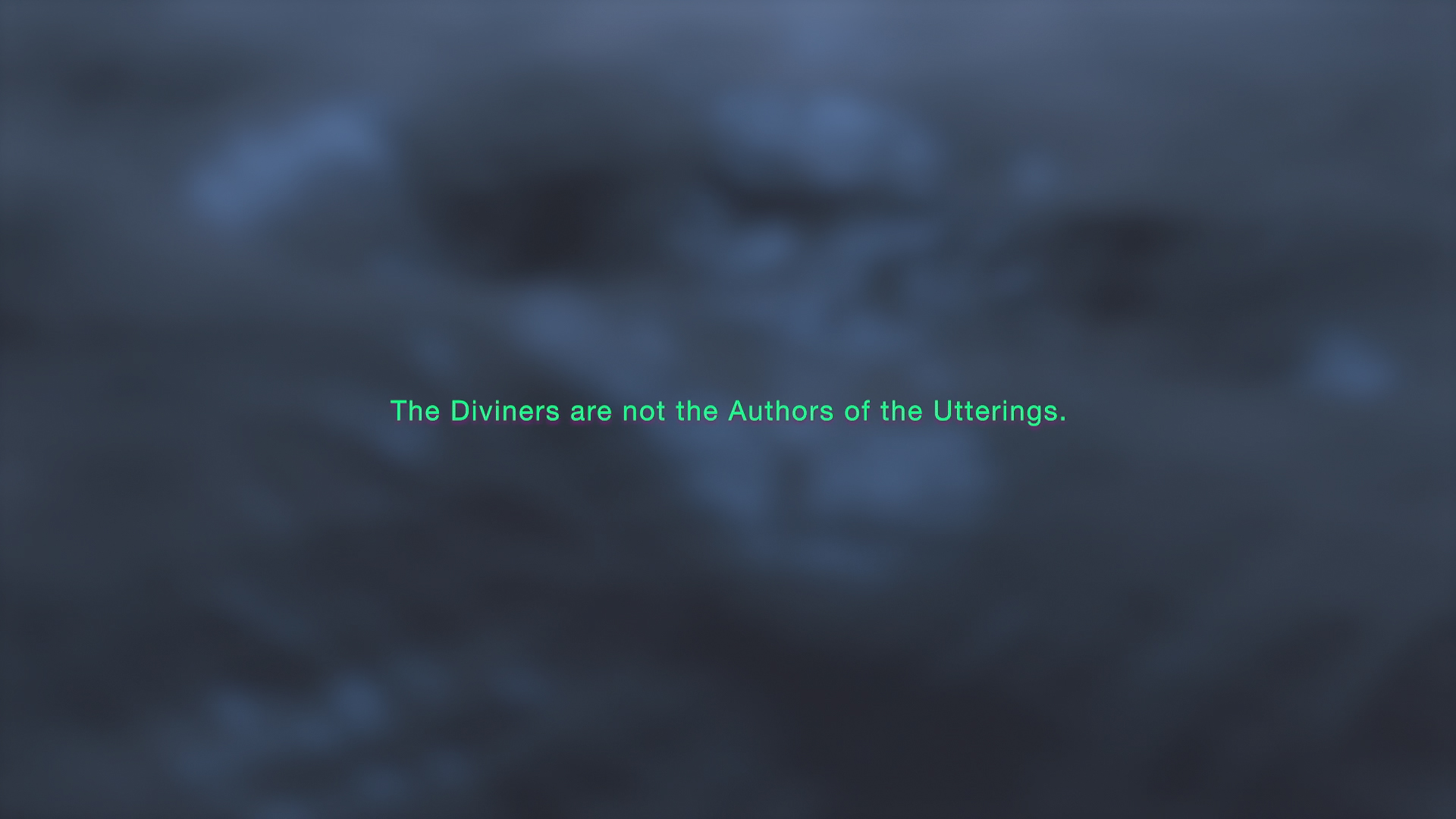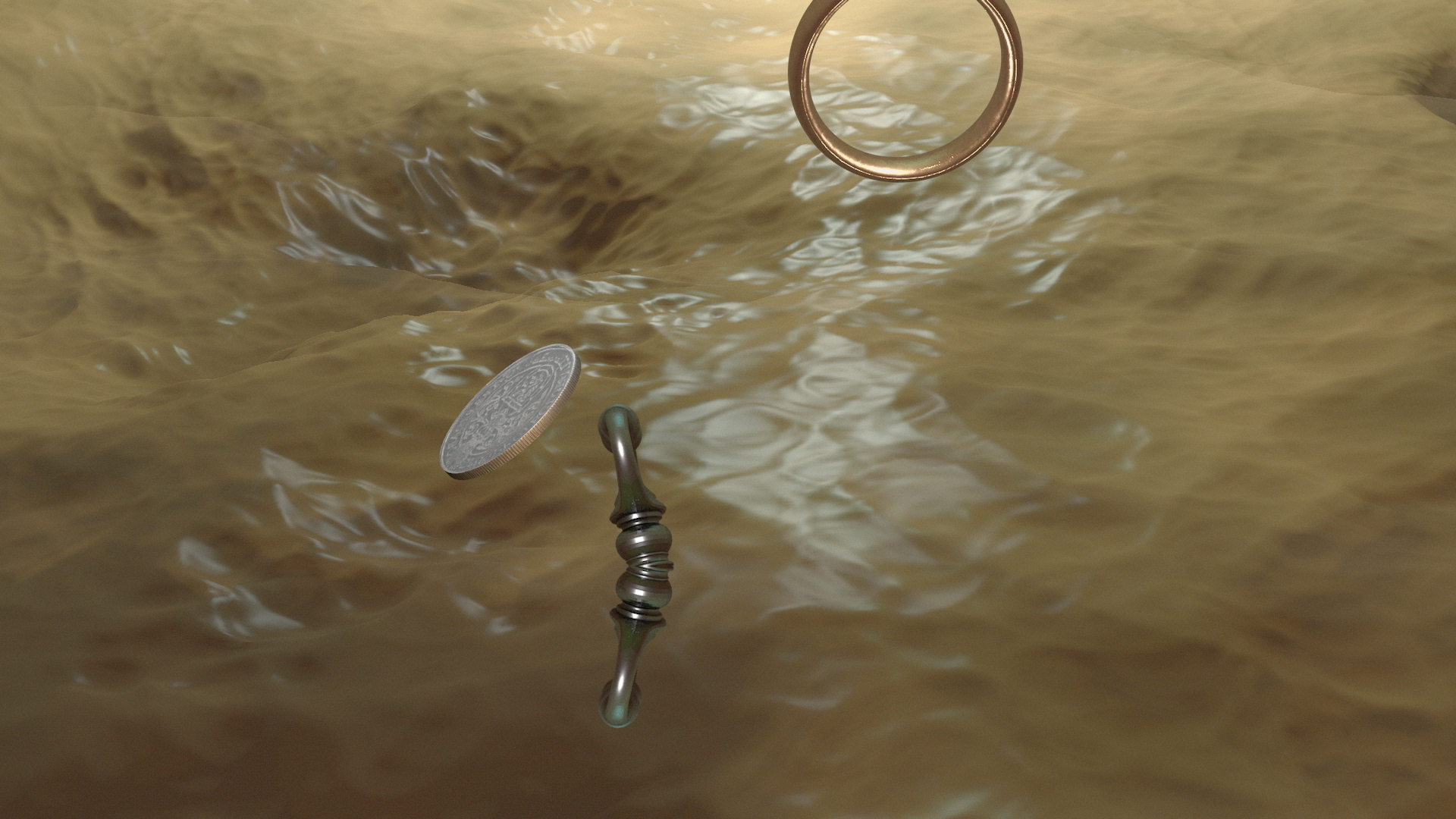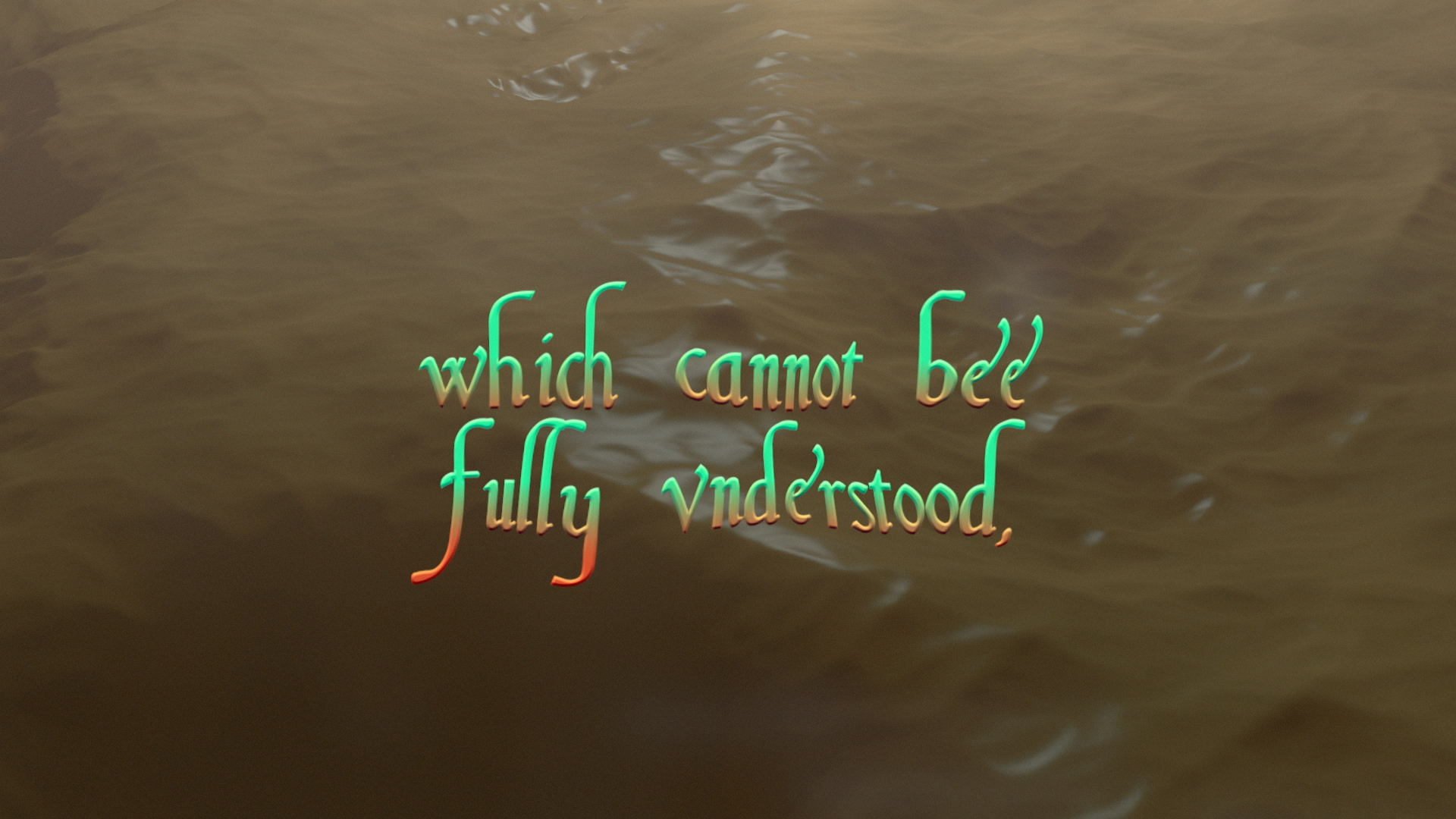Nereda 2: a Hydromancy
HD, colour/audio, 06’30”, 2024
Produced with the support of EU Creative Europe, HKU Utrecht (The Netherlands), Hydromedia.org. Audio recorded at the HDSR waste water treatment plant at Overvecht (NL).
Nereda 2: a Hydromancy was made as part of the Hydromedia project: “Hydromedia mobilizes the arts to visualize the Green Deal (area 7) agenda in tangible ways so to promote transnational dissemination and audience engagement.”
Hydromancy is a method of divination through water. The divinators are not the authors of the utterings.
The video uses an audio recording of the discharge of one of the bassins (“Nereda 2”) on the terrain of the HDSR waste water treatment plant in Overvecht (NL), which was then digitally distilled to reveal a speech.
“Psellus de damonibus sheweth how it is done: that the deuills creepe in the bottome, and send forth a still confused sound, which cannot bee fully vnderstood, that they may be held to say what euer come to passe, and not to lye.”
16th century, Juan Luis Vives as commentary on St. Augustinus “Concerning the Hydromancy Through Which Numa Was Befooled by Certain Images of Demons Seen in the Water.”
The Diviners are not the Authors of the Utterings is inspired by the article ‘Why Diviniation? Evolved Psychology and Strategic Interaction in the Production of Truth’ by Pascal Boyer (2020, published in Current Anthropology, volume 61, issue 1)
Nereda 2
Hydromancy { ὑδρομαντεία
~ the supposed art of divination by water
The Persians, according to Varro, invented it; Pythagoras and Numa Pompilius made use of it; and we still admire the like wonderful prognosticators.
Encyclopedia Brittanica, 1797.
In the science fiction film ‘Arrival’ (2016), linguist Louise Banks is assigned to establish communications with alien beings that have appeared on Earth in large, monolithic vessels that hover silently above various locations. She is called in to help the military understand whether this visit is friendly or a threat. In one scene, Banks, cloaked in an oversized hazmat-suit, walks towards these otherworldly beings while holding up a handwritten sign that states ‘human’.

The idea that other beings may communicate in ways we can hardly fathom speaks to the imagination. We wish to understand. By trying so, throughout our human existence many methods of translation have been explored: from interpreting the intestines of rabbits, to making spectral analyses of chemical substances, or using artificial intelligence to decypher whale songs.
For centuries, the interior waters of The Netherlands have been constrained by dykes, sluices, levees, pumps, mills, and pipes. Calmly guided through canals, the Dutch waters rarely run wild and are barely audible, except through the mediation of machinery, such as engine-driven ship propellers or mechanical floodgates.
While on a research visit to the waste water cleaning plant of HDSR in Utrecht, I noticed two things. Processing 65 million litres of water daily, water was eerily absent on its terrain; it is hidden in tubes and pipes only to surface in enormous reservoirs that tower above ground. Despite these elaborate installations, the site was surprisingly silent apart from a soothing, continuous, machinated humming. However, at the top of the metal stairs leading to one of the bassins’ surface, we passed a tall metal pipe, aimed at the sky and covered by a grid, emitting loud noises as if something inside growled and grunted, roared like a wild animal trapped in a cage. A few metres below, water was sloshing around violently, its sound amplified by the metal tube turning the opening at the top into its mouthpiece.
I was struck by the strange unevenness of the noise, reminiscent of the syntax of human speech patterns: here, set loose from the reservoir and gasping for air, it seemed as if the water tried to speak.
It turned out that these episodic speeches are induced when the reservoir overflows and dumps its excess waters in the tube, processing up to 3,5 million litres per hour: almost one thousands litres per second. For comparison: an average bathtub contains about 130 litres. The sheer force of the water flow through the pipe caused the metal platform on the top of the installation to shudder, a behaviour quite different from the usual flow of rivers, streams and ditches that cut through the Dutch landscapes.
The water trapped in this pipe appeared to be liberated: free to find a voice loud enough to not be ignored. In search of this perceived water spirit, I recorded the sound, after which the water’s speech was isolated by visualising it in an animation. Using audio-reactive processes, the audio is augmented to a spatial visual language that still embodies elusive, water-like properties, while remembering the tube it originated from.
Process
The process requires a heightened awareness of ephemeral non-human bodies, and in this case a particular sensitivity towards the sound these may produce. I took cues from a previous project in which I translated European spruce bark beetle patterns that were left in the bark of infected trees to audio, by using digital ‘image sonification’. With Nereda 2, the opposite took place: audio became image.
This adaptation is aimed at transforming a nonhuman entity to a form people can understand a bit better: a hybrid of its original appearance and human mediatorship – in this case through the use of computer technology. For Nereda 2, the audio I encountered at the wastewater plant was first recorded with a phone. Later, more professional recordings were made. For the final work, both types of recordings were used.

These audio-files were then transported to a computer: a digital environment that mimics the fluidity of water. The process was directed at finding what is hidden: the perceived speech, the ‘voice’ that seemed to speak, the shape it might take. ‘Nereda 2’ is an homage to a supposed gasping water spirit intermittently living in the pipe of the eponymous waste water cleaning plant reservoir. As a hypothetical, imagined mythological entity, it can take any form.







